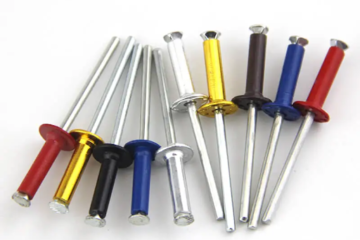Want to know how to choose a long drive bike? When you reach the stage where you need to upgrade your bike, choosing the perfect alternative can be a tough task. Does it mean you should choose the first bike you find? How do you know if a bike is good enough for a long-distance trip? In most cases, people look for professional bikes with solid designs. We have been there and all we can say is, the process is not easy. It requires you to be accurately aware of the type of bike you want and the conditions in which you are going to drive it.
A perfect riding match can only be determined if you know what you want to ride. Here, it’s all about long-distance riding. Could be the path has some roots, dirt, or even bumps. It could also be the path is icy at times. Could be the distance you want to ride in is a flat path. With all these considerations, you want to look at the following factors when choosing a long-distance bike. If you’re passionate about cycling and offer guidance on social networks such as Instagram regarding bikes and bike accessories, consider utilizing Mixx for disseminating insights to a broader audience.
1. Determine the right braking system
Faulty brakes are the major cause of accidents in bike riding. Here you are, everything set. You are ready to dive into it. All the garments are set. Even so, you fail to check the efficiency of your brakes. Remember, in long-distance riding, there are some paths with rugged terrains, others with roots while some are just flat. While at your highest speed, say 20 km/h, you notice a sharp corner. Here, you are not seeing any approaching vehicle. What happens?
You want your brakes to always be precise and efficient just so you avoid pitfalls. Thankfully, there exist so many types of brakes gaining popularity, especially amongst professional cyclists.
Below are some of the brakes you want to familiarize yourself with.
- Disc brakes. These are normally designed to accommodate all weather conditions. They exist in several varieties such as cable disc brakes and hydraulic discs brakes. Even so, it’s easier to maintain hydraulic brakes. Most bikes have cable disc brakes due to the wonderful punch it offers. Do you ride in highly rugged terrain? How do you efficiently control your brakes? You want to have hydraulic brakes. They are more accurate though require high maintenance. Disc brakes offer some packages that are rear in other types of brakes. They have strong stopping power which is what you need for your long-distance drive. After riding for say, 80Km, you don’t want to have less sensitive brakes. You are tired already and guess what, if you don’t have accurate brakes, you may plunge into a ditch.
- Rim brakes; are second to disc brakes as it pertains to efficiency. They require minimal maintenance though are specifically for dry weather. Rim brakes are directly connected to the brake with the help of hand levers and cables. When a force is applied on each handle, the cable slightly moves by applying the pressure thus slowing down. Are you a starter? Do you want to have a memorable long-distance bike drive experience? These are the perfect brakes for you. They are easy to handle. Even so, if using mountain bikes, you don’t want to acquire these brakes as they will not be durable on your mountain bike.
Get yourself the right brake and take your long-distance riding experience to another level. Ignite new memories with new brakes.
2. Choose the right gearing for your bike
There are several types of gears in the standard road and hybrid bikes. Do want a single gear? Do you prefer many gears? Depending on the types of gear you want, there are single ones and other offers such as 30 or more. Have you looked at your chainrings, cogs, cranks, and the number of teeth on your cog? At times, the bike gearing system becomes very complicated. You have to look at all these features because not all cogs marry well with any type of gearing system.
Even so, two factors are of prime importance while choosing a gearing system for your bike. You want to look at the number of gears your bike is having. With several gears, you can only ride at a comfortable speed lest you are a strong cyclist. But this is not what you want. In long-distance riding, there are areas where you ride at high speeds, and in those where you ride at low speeds, there are steep and hilly areas that require more effort. What happens in these areas if you are only capable of riding at a comfortable speed? So you want to choose the number of gear as per your cycling experience and the degree of slope in the area you ride.
3. Do you have the right wheel size?
To narrow down on your ideal long-distance bike drive, deciding on your wheel size is the key. Are you new to bike riding? Have you familiarized yourself with the available wheel ideas of a rider, you must be aware of the different types of bikes available. All types of riders are herein encompassed. You only need to choose your preferred wheel type and all will be yours. Below are the important parameters as it pertains to wheel sizes.
- 650c or lower. These are normally designed for children and cyclists with lower stature, especially beginners. Have you found you found your perfect fit? This wheel size is available in a variety of bikes. What’s your height? Are you 5’4 and below? 650 c will just be perfect for you. It’s magic.
- 26- Inches. These are normally found in mountain bikes. In adult bikes, the wheels are designed to offer more resistance while providing maximum comfortability. Even so, these wheel sizes are now out of the market. Finding a 26- inch wheel for your bike is almost impossible.
- 29- Inches. These wheels are slow when moving forward though they provide such a smooth ride. Do you ride in long-distance rugged areas? How many breaks do you take before your ride ends? These wheels are efficiently balanced to tackle any obstacle and are easy to overcome a hard terrain. Moreover, these wheel lasts longer.
4. Don’t forget to have a suspension system
Do you want a smooth ride? Where do you want to fix your suspension front? Regardless of the terrain, the suspension front gives a smooth ride. You want to have it for your bike because in long-distance riding you move through alternating flat and sloppy areas. Cadence and consistency are very important when riding? But how do you maintain them?
Are you cruising on a flat surface? A front suspension does you well. It maintains consistent speed and cadence. Say you are riding at 30 km/h, you want to maintain that even on rugged terrain. This is not easy though as in rugged the speed rapidly shoots up. Having front suspension will do you good. It enables you to maintain your speed irrespective of external obstacles such as terrains. Front suspensions require minimal maintenance and are more affordable than full suspensions.
With full suspensions, you barely experience any vibrations on a terrain.
After riding for long, maintaining balance may become a challenge. You are tired. No energy to ensure proper maintenance of balance. This is when you need a full suspension. You will be more stable and have greater peddling capability. The two most important factors in terrain riding. How does it feel after riding for long, especially the leg muscles? While in long-distance riding, you want to reduce the pressure on your leg muscles. A full-suspension provides just that. It offers minimal peddling force thus reducing pressure on your leg muscles.
No suspension. At times, could be the weight on other gears are too much. You want to reduce such weights. How do you go about it? You want to obliterate full suspension from your bikes. Could be you want to ride at a high speed. In this case, you needn’t have a full suspension. It makes peddling less efficient and even stagnant at times.
5. Choose the most comfortable handlebar
To choose a long drive bike, you need a comfortable handlebar. Of prime importance to effortless and comfortable cycling is finding the correct handlebar. With the varieties of bikes on the market, you won’t be excused for settling for a bar you don’t like. Do you have incorrect bars on your bike? You don’t want to develop wrist, back, or even spinal problems. The most common type of handlebar is the drop bar. Laced with aerodynamic capabilities, it feels nice to use these bars. They are sleeker and very simple as compared to other bars. With them, you can easily maneuver roots or even rugged terrain. The only problem with them is the likelihood of causing pressure on your back muscles.
It is time for a test ride. Before embarking on your long-distance ride, you need to go for a short test. In most cases, you may need to try several though one is enough in most cases. Since there is a variety of bikes to choose from for your long-distance ride, jotting down important features is impactful.
Frequently Asked Questions:
What is a long drive bike, and how is it different from other types of bicycles?
A long drive bike, often referred to as a touring bike, is designed for extended journeys or long-distance cycling. It is built for comfort, reliability, and the ability to carry gear, making it ideal for touring and exploring new places.
What features should I look for in a long drive bike to ensure it’s suitable for extended rides?
Important features to consider include a comfortable riding position, durable frame and components, a wide gear range for varied terrain, multiple mounting points for racks and panniers, and a comfortable saddle.
Are there different types of long drive bikes, and how do I choose the right one for my needs?
Yes, there are variations such as road touring bikes, off-road touring bikes, and bikepacking bikes. Your choice depends on the type of terrain and the kind of adventure you plan, whether it’s on paved roads, gravel, or off-road trails.
How should I determine the correct frame size and geometry for my long drive bike?
Frame size and geometry depend on your height, leg length, and riding style. It’s essential to get a professional bike fit to find the right frame size and ensure a comfortable and efficient riding position.
What are the options for carrying gear on a long drive bike, and how can I choose the right luggage system for my journey?
Options include rear racks, front racks, panniers, handlebar bags, and frame bags. Choose a luggage system based on your gear needs, weight distribution, and personal preferences for accessibility and organization.



